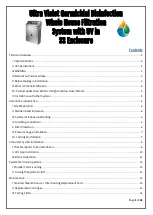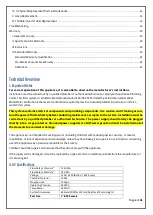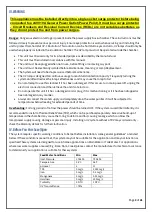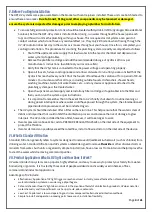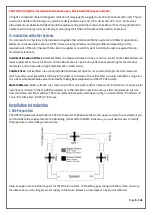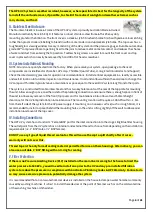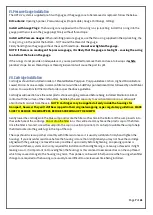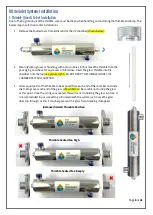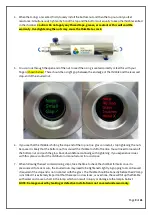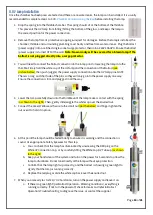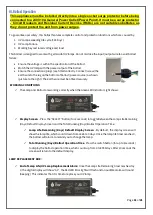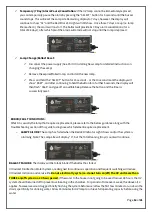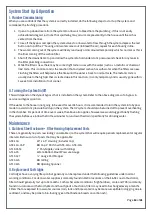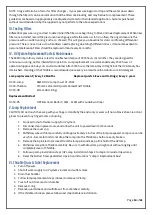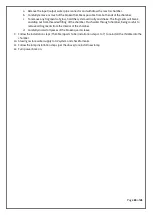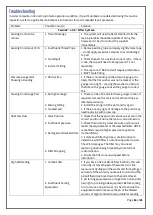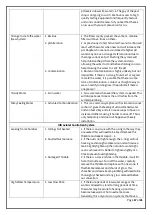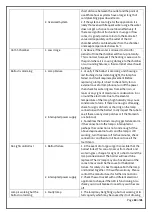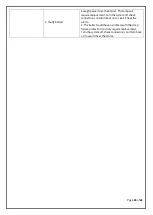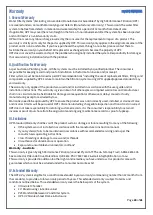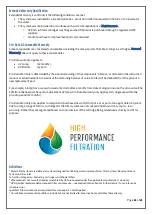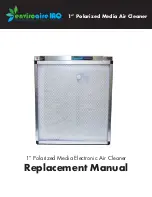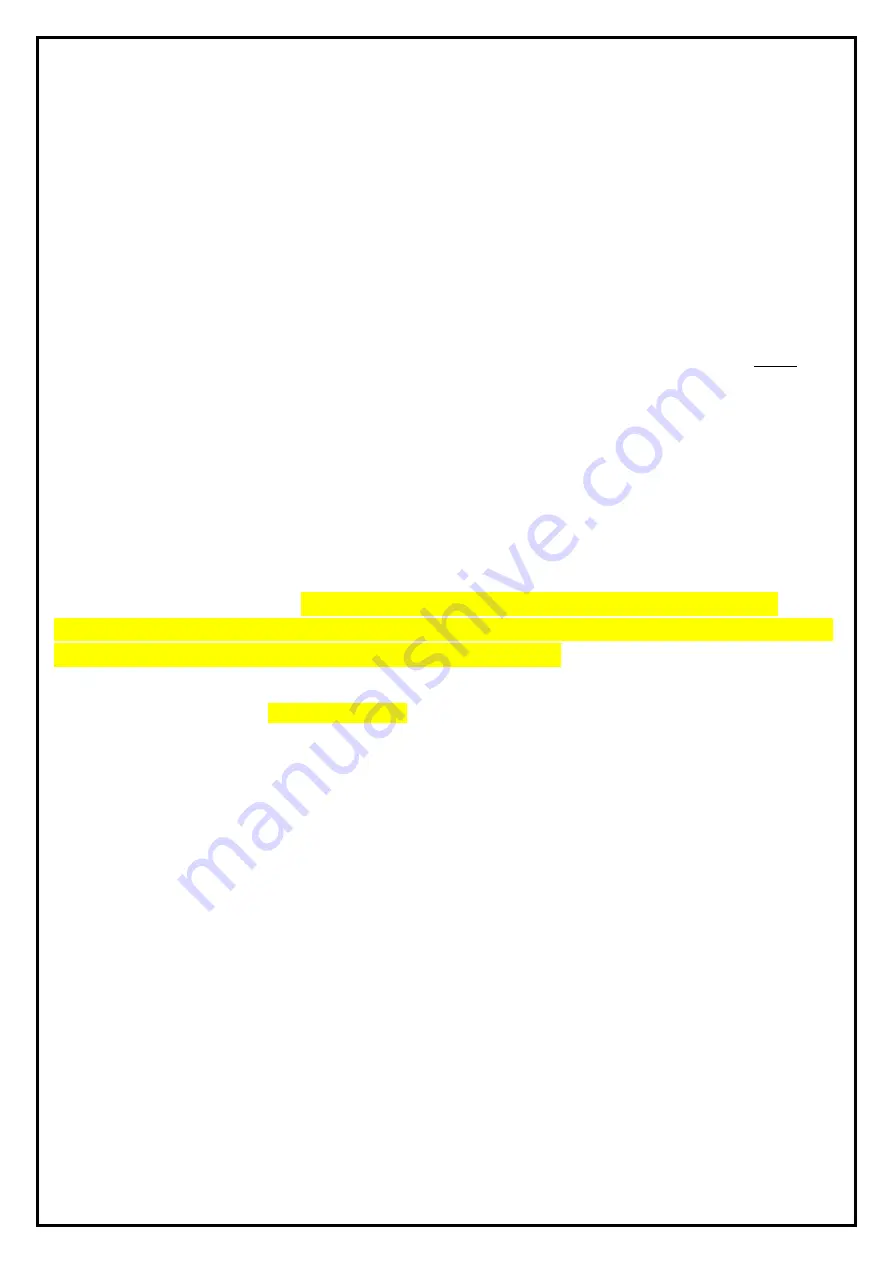
Page
7 of 21
VI. Pressure Gauge Installation
The HPF-UV system is supplied pre-fit with gauges, if the gauges are to be removed or replaced, follow the below.
Kit Contains: Opening Spanner, Pressure Gauges (If applicable), Gauge Port Bungs, O-Rings
Install with Gauge Plugs: The housings are supplied with a thin o-ring is a zip-lock bag. Install this o-ring into the
gauge port then screw in the gauge plugs firmly without thread tape.
Install with Pressure Gauges: When installing pressure gauges, use the thin o-ring supplied in the zip-lock bag, the
O-ring is to go in the port at the bottom – NOT around the thread of the gauge.
Firmly hand tighten the gauge without the use of thread tape –
Do not overtighten the gauge.
NOTE: If there is no reading on the pressure gauge, it is likely that the gauge is too tight – causing the o-ring
to obstruct the hole on the gauge.
If the o-rings do not provide an adequate seal, you are permitted to remove them and use 6 to 8 wraps of
white
plumber’s tape. Excess thread tape or thread glue/sealant will cause the port to split.
VII. Cartridge Installation
Cartridges should be installed in order of: Pleated Before Polyspun, Polyspun Before Carbon, Highest Micron Before
Lowest Micron. As an example, a common filter set would be a 5uM Polyspun Sediment Filter, followed by a 5uM Silver
Carbon. You would install them in that order as per the above guideline.
Cartridges will need to have the outer plastic shrink wrapping removed before being installed. Maintain minimal
contact with the surface of the carbon filter, handle by the end caps only to avoid contamination as carbon will
absorb smells and oils from the skin.
NOTE: Cartridges may be supplied already inside the housings for
transport, however they will still be wrapped in their original wrapping as per regulatory guidelines. MAKE
SURE TO REMOVE THE WRAPPERS BEFORE SCREWING UP THE SUMPS!
Gently lower the cartridge into the blue sump and locate the filter so the stem in the bottom of the sump inserts into
the centre hole of the cartridge. Do not drop the filter in as this centre stem may break the plastic caps of the filters.
Once the filter is located, screw the sump into the cap (in a vertical position). It can help to wobble the sump to help
the filter locate into the guide lugs in the top of the cap.
The caps should screw up rather smoothly with little resistance so it is usually suitable to firmly hand tighten the
housings. If you encounter resistance before the housing is more than ¾ tightened you may not have the cartridge
aligned with the guide lugs; remove the sump and line it up correctly before tightening. An opening spanner is
provided with these systems and is only required for installation if hand tightening is not easily achieved or if slight
leaking occurs. It is important not to overtighten the housings as this can lead to excessive stress on the cap thread
which may cause damage to the housing long term. The spanner can be used to help unscrew the housing when filter
changes are required as the housings are usually more difficult to unscrew over time being installed.

